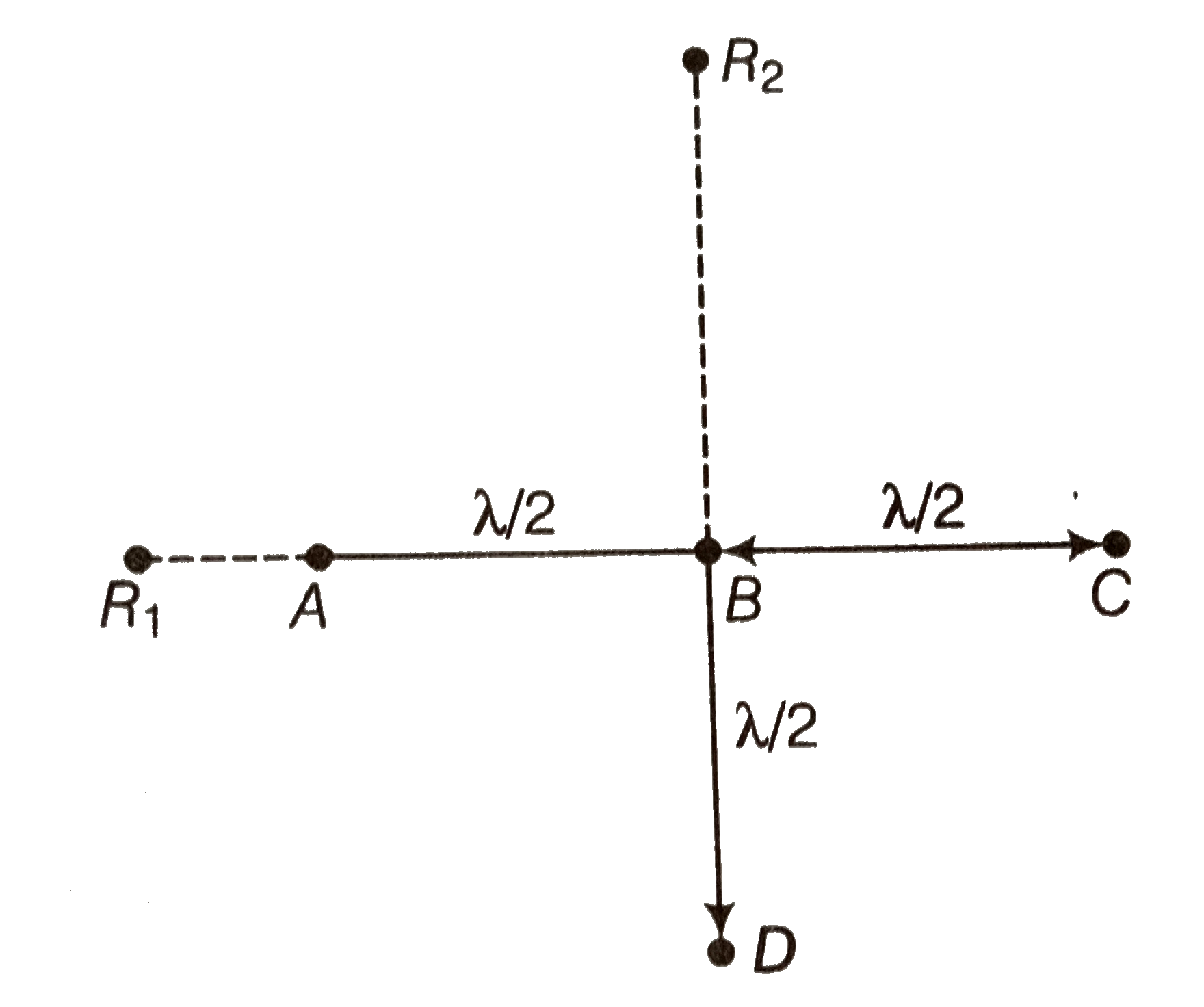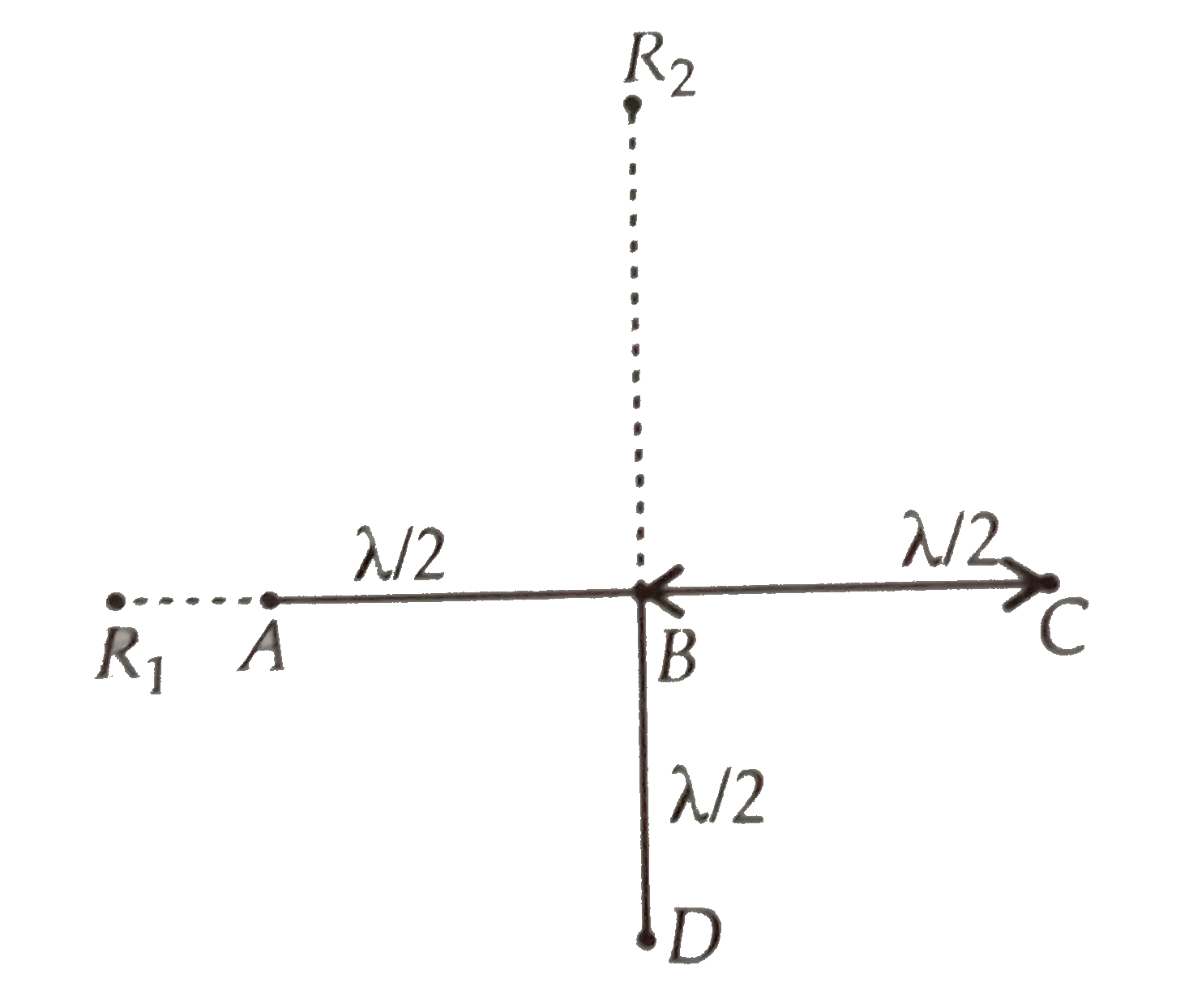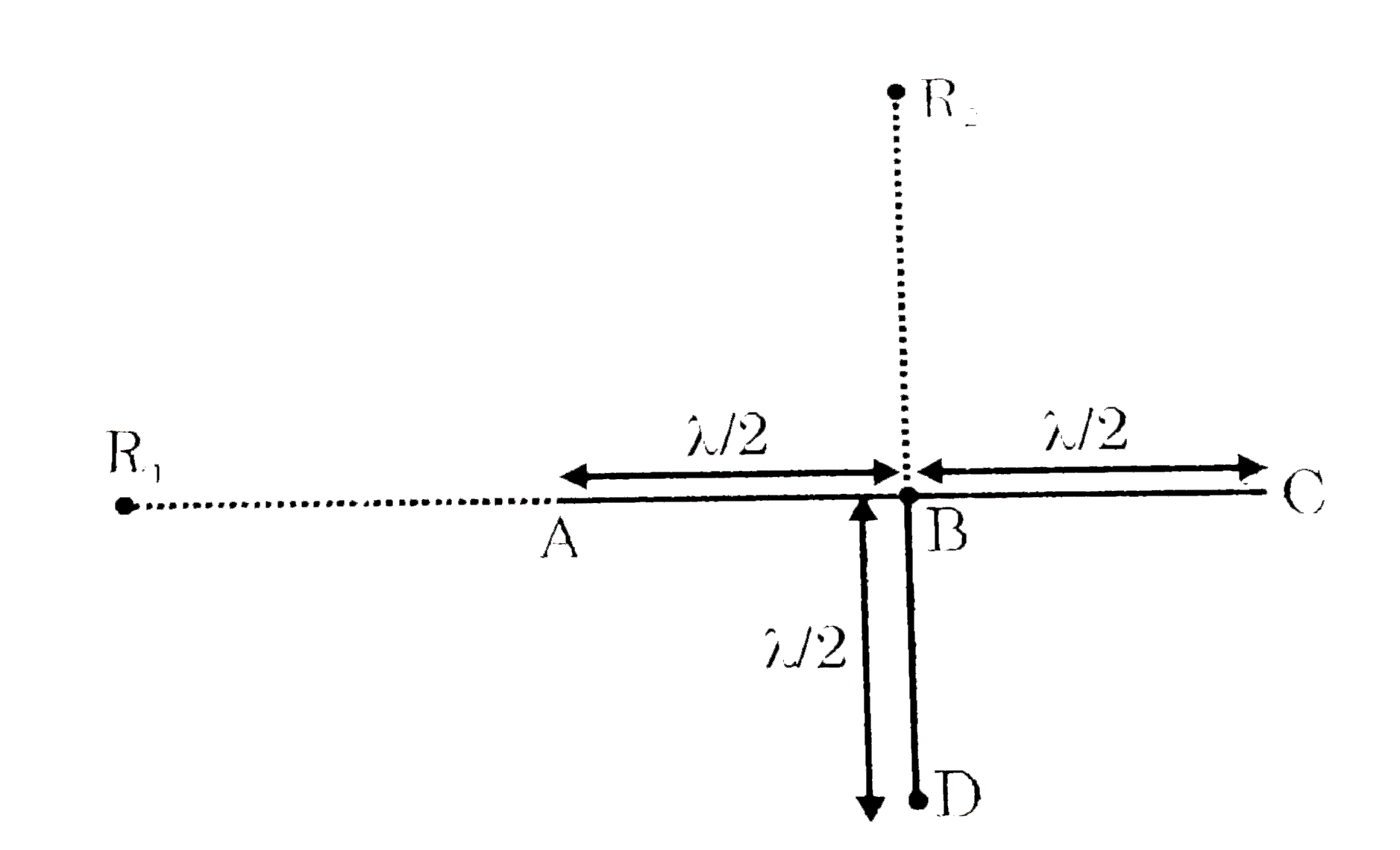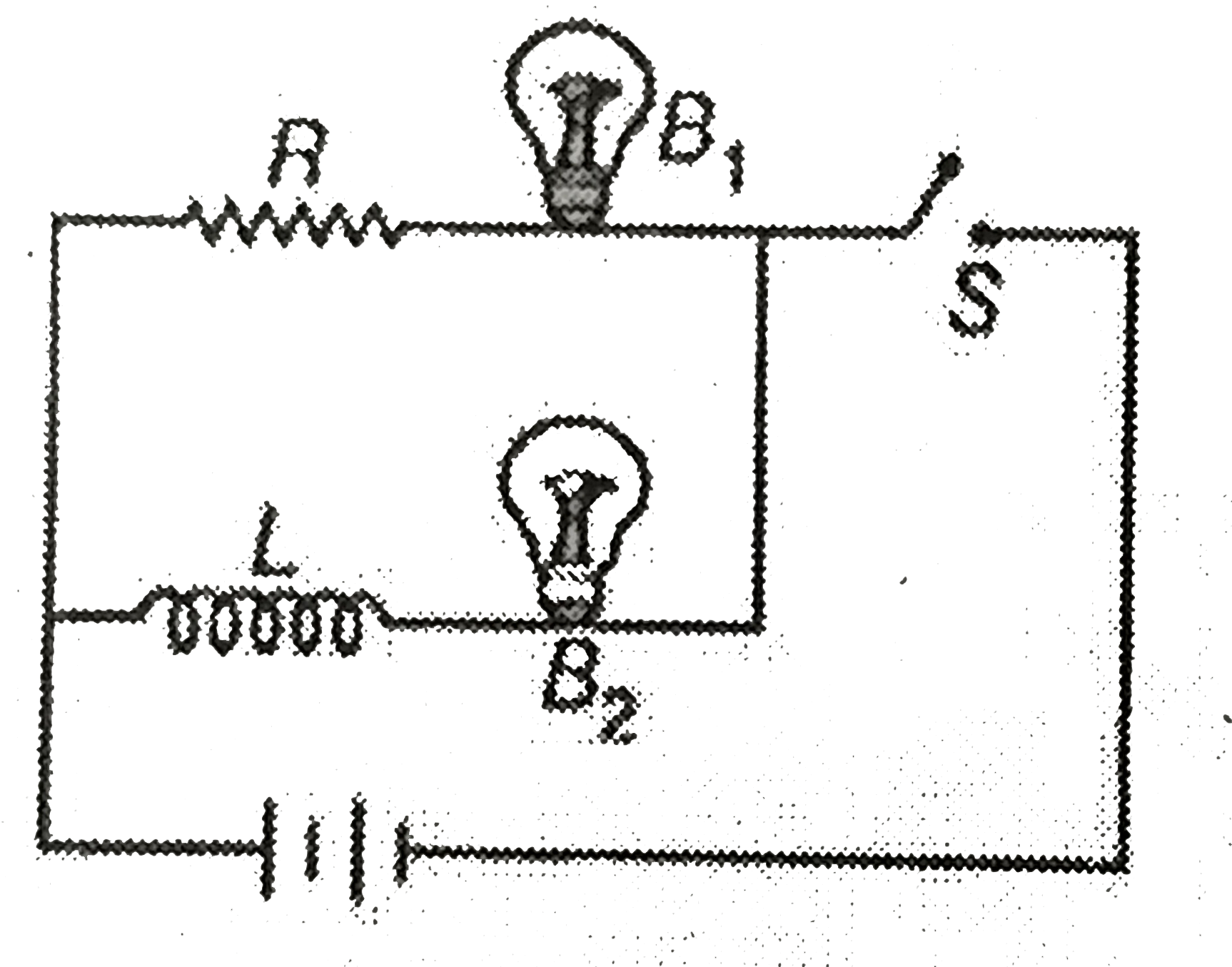Four identical monochromatic sources A,B,C,D as shown in the (figure) produce waves of the same wavelength λ and are coherent. Two receiver R1 and R2 are at great but equal distances from B.
(i) Which of the two receivers picks up the larger signal when B is turned off?
(iii) Which of the two receivers picks up the larger singnal when D is turned off ?
(iv) Which of the two receivers can distinguish which of the sources B or D has been turned off ?

R1
R2
R1 and R2
None of these.
The correct Answer is:B
Consider the disturbances at R1 which is at distance d from A. Let the wave at R1 because of A be yA=a coswt. The path difference of the signal from A with that from B is λ/2 and hence the phase difference is π.
Thus, the wave at R1 because of B is
yB=a cos(wt−π)=−a coswt.
The path difference fo the signal from C with that from A is λ adn hence, the phase difference is 2π.
Thus, the wave at R1 because of C is yc=a coswt.
The path difference between the signals from D with that of A is
P=R1D−R1A=√(R1B)2+(BD)2−(R1B−AB)

=√d2+(λ2)2−(d−λ/2)=d(1+λ24d2)1/2−d+λ2
=d(1+λ28d2)−d+λ2=λ28d+λ2
If d>>λ, the path difference ~λ2 and hence the phase difference is π.
∴yD=−a coswt.
Thus, the signal picked up at R1 is
y=yA+yB+yC+yD=0
Let the signal picked up at R2 from B be y′B=a1 coswt.
The path difference between signal at D and that at B is λ/2.
∴y′D=−a1 coswt
The path difference between signal at A and B is
√(d)2+(λ2)2−d=d(1+λ24d2)1/2−d=λ28d
∴ The phase difference is
2πλ⋅λ28d=πλ4d=ϕ~0.
Hence, y′A=a1 cos(wt−ϕ)
Similarly, y′C=a1 cos(wt−ϕ)
∴ Signal picked up by R2 is
y′A+y′B+y′C+y′D=y′=2a cos(wt−ϕ)
[∵y′B+y′D=0]
|y|2=4a21 cos2(wt−ϕ)
∴<I>=2a21
Thus R2 picks up the large signal.
Topper's Solved these Questions
- WAVE OPTICSBook:NCERT FINGERTPS ENGLISHChapter:WAVE OPTICSExercise:NCERT EXEMPLAR PROBLEMS
Explore 5 Videos
- WAVE OPTICSBook:NCERT FINGERTPS ENGLISHChapter:WAVE OPTICSExercise:ASSERTION & REASON CORNER
Explore 15 Videos
- WAVE OPTICSBook:NCERT FINGERTPS ENGLISHChapter:WAVE OPTICSExercise:Assertion And Reason
Explore 15 Videos
- SEMICONDUCTOR ELECTRONICS : MATERIALS , DEVICES AND SIMPLE CIRCUITS Book:NCERT FINGERTPS ENGLISHChapter:SEMICONDUCTOR ELECTRONICS : MATERIALS , DEVICES AND SIMPLE CIRCUITS Exercise:Assertion And Reason
Explore 15 Videos
Similar Questions
Knowledge Check
Four identical monochromatic source A, B, C, D as shown in figure produce waves of the same wavelength λ and are coherent. Two receivers R1 and R2 are at great but equal distance from B. The choose the correct statements.
 Athe reciver R2 picks up the larger singalBtwo receiver R! and R2 picks up singals of equal intensity when B is turned offCwhen source D is turned off R2 picksup larger singalDwhen source B is turned off the singal recevied by R1 changes
Athe reciver R2 picks up the larger singalBtwo receiver R! and R2 picks up singals of equal intensity when B is turned offCwhen source D is turned off R2 picksup larger singalDwhen source B is turned off the singal recevied by R1 changesIn question number 3, which of the two receivers picks up the larger signal when D is turned off?
AR1BR2CR1 and R2DNone of these.In question number 3, which of the two receivers picks up the larger signal when D is turned off?
AR1BR2CR1 and R2DNone of these.
In question number 3, which of the two receivers picks up the larger signal when B is turned off?
View SolutionWhich contents are lost when the computer turn off?
View SolutionFour identical coherent sourc e emiting monochromatic light if same wavelength lambda are placed at A,B,C and D as shown. Two receivers R1 and R2 are at but equal distance from B. The path difference between signals reaching from A&D at R1 is λ2 and between signals reaching from A & B at R2is≅0. Also assume that intensities of waves emitted by A,B,C &D reaching at R1 and R2 is same.

View SolutionFigure represents two bullbs B1 and B2resister R and inductor L. When the switch S in turned off,then

View SolutionTwo coherent light sources A and B are at a distance 3λ from each other (λ=wavelength)The distances from A on the X-axis at which the interference is constructive are

View Solution

